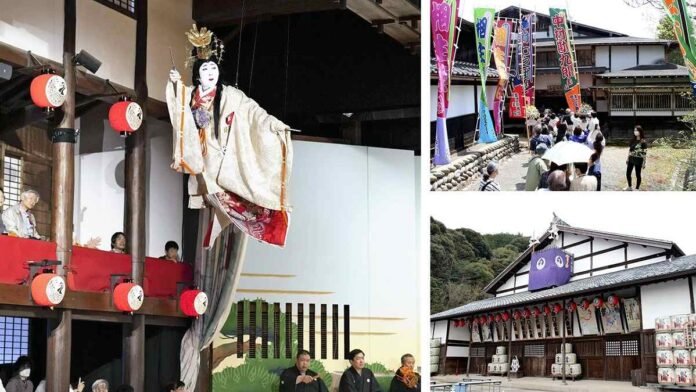11:30 JST, June 10, 2024
Shibaigoya, or quaint kabuki playhouses that carry on traditions from the Edo period (1603-1867), survived the coronavirus pandemic and are now experiencing restoration and revival.
In Kotohira, Kagawa Prefecture, colorful banners and cherry blossoms during peak bloom marked the “Shikoku Konpira Kabuki Grand Theater” performance, held for the first time in five years.
The Konpira Grand Theater – commonly known as the Kanamaruza – is Japan’s oldest surviving shibaigoya theater. In April, this nationally significant cultural asset hosted a performance featuring actors such as Matsumoto Koshiro X, Nakamura Jakuemon V and Nakamura Ganjiro IV.
Since 1985, a kabuki performance has been organized every year at the Kanamaruza, which became the theater’s spring tradition. However, the pandemic and renovation work forced the cancellation of performances from 2020 to 2023.
This year, however, people came from all over the country to see the performance. Kotohira Mayor Hideki Kataoka said: “It sounded like the Kanamaruza was saying, ‘I’ve been waiting for this!'”
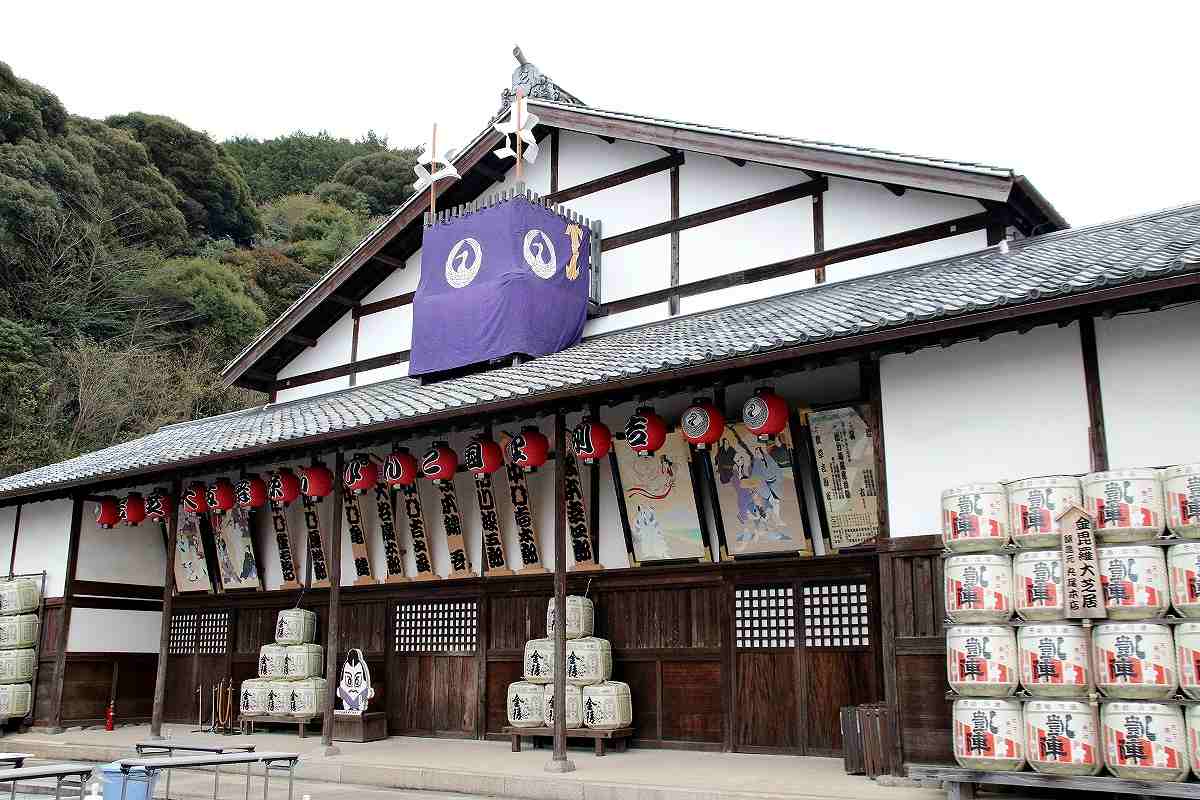
The Kanamaruza Theater features signs created to entice customers.
Spectators leaned forward to enter through the low entrance, a so-called ‘nezumi kido’ – literally ‘rat door’ – and sat in the masuseki seating. They were impressed by the energy on stage, from so close it felt like they could reach the actors.
The Mino Kabuki Museum Aioiza in Mizunami, Gifu Prefecture, hosted a special performance by the Nakamuraya group on April 15 for the first time since 2017. The theater is one of the locations of the group’s tour.
Nakamura Kankuro VI was ill and his younger brother Shichinosuke II performed the dance “Bukaku Gojobashi” that day. After playing the female role of Tokiwa Gozen, Shichinosuke appeared in the Hanamichi passage as Benkei with a Japanese halberd in his hand, eliciting roars and cheers from the 380 spectators.
The audience threw wrapped monetary offerings, or ohineri, a traditional way of praising the actors’ performances, and the sense of solidarity unique to the convivial shibaigoya seems to have encouraged Shichinosuke to play the two roles flawlessly to the end.
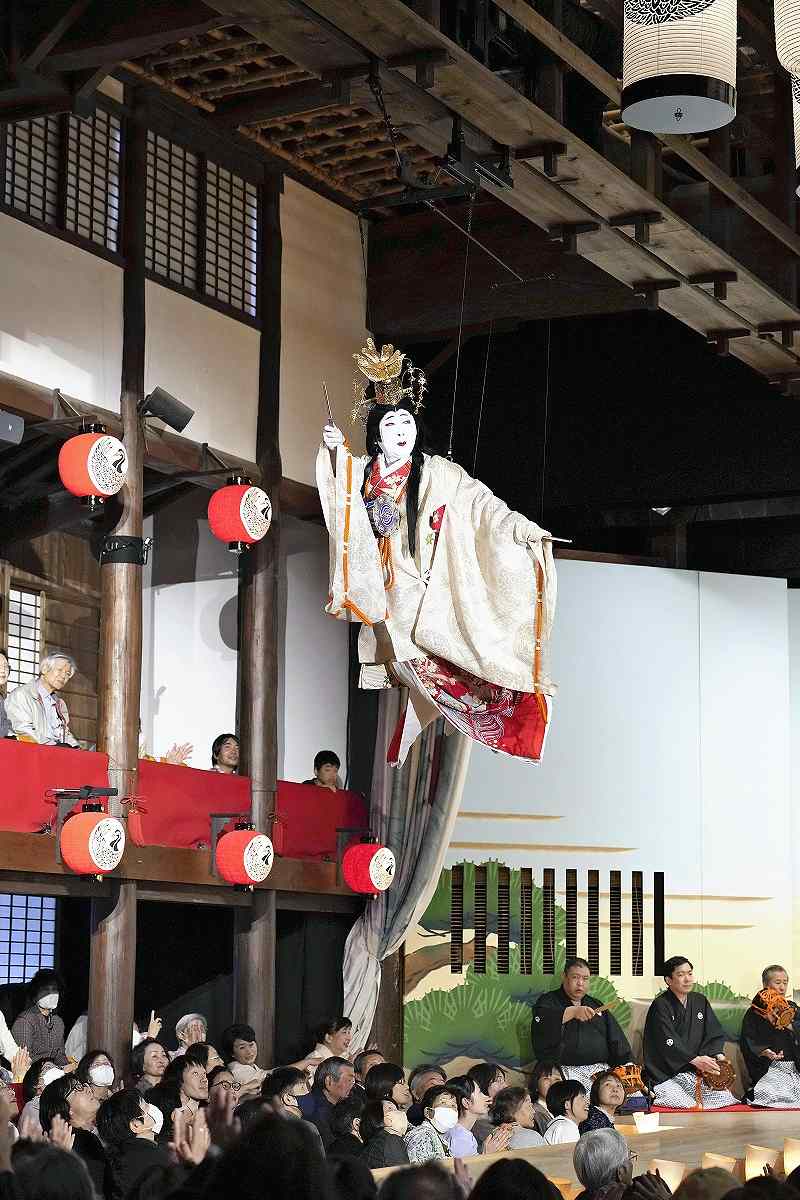
Nakamura Jakuemon V dances while flying around on a rope while performing ‘Hagoromo’.
Preserving the origins of Kabuki
Shibaigoya playhouses, built between the Edo period and the early Showa era (1926–1989), were demolished or closed one after another due to the diversification of entertainment options during the period of rapid economic growth in the 1960s and 1970s. They have since been re-evaluated as a cultural asset and are being restored and reopened.
About fifteen playhouses have their names registered with the National Shibaigoya Council, established by groups involved in the conservation and use of shibaigoya. They actively organize performances, but also struggle with maintenance and management.
For example, the Kanamaruza was built in 1835 and restored to its original form in 1976. In 2003 it was reinforced against earthquakes, and between 2020 and 2022 the walls and ceiling were reinforced. Half of the ¥225 million cost of the project was the support of the national government, but it is still not a light burden for a city of 8,000 residents to cover the remaining amount.
“We have a mission that can only be accomplished here, where an Edo period playhouse still stands,” Kataoka said.
Chairs with backrests were installed for the latest versions, but some elderly people found it difficult to climb stairs or sit for long periods of time. Tomoyoshi Urabe, a professor at Nihon University’s College of Engineering and an expert in stage architecture, said: “The density of seating and the use of natural light in a playhouse are attractive features. It would be nice to use them in accordance with the times and with respect for their original appearance.”
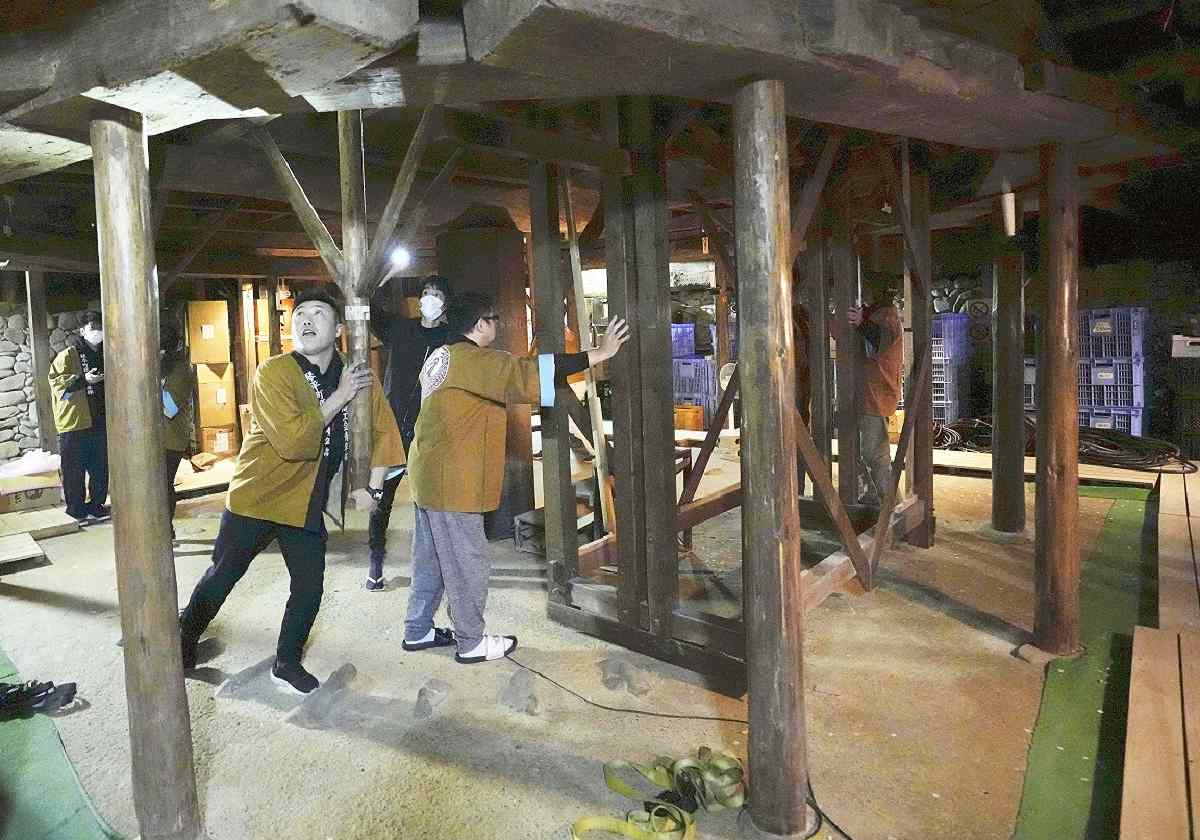
The Kanamaruza Theater’s revolving stage is moved by the youth club of the local chamber of commerce and industry.
The Aioiza is the center of local kabuki performances. Mino kabuki performances, which have had roots in the area since the Edo period, are presented every autumn by participants from children to the elderly. Children also perform joruri puppet shows and dances.
The theater is privately operated and when the roof was damaged, letters were sent to supporters across the country and ¥5 million was raised for repairs. The theater also manages costumes and produces its own props.
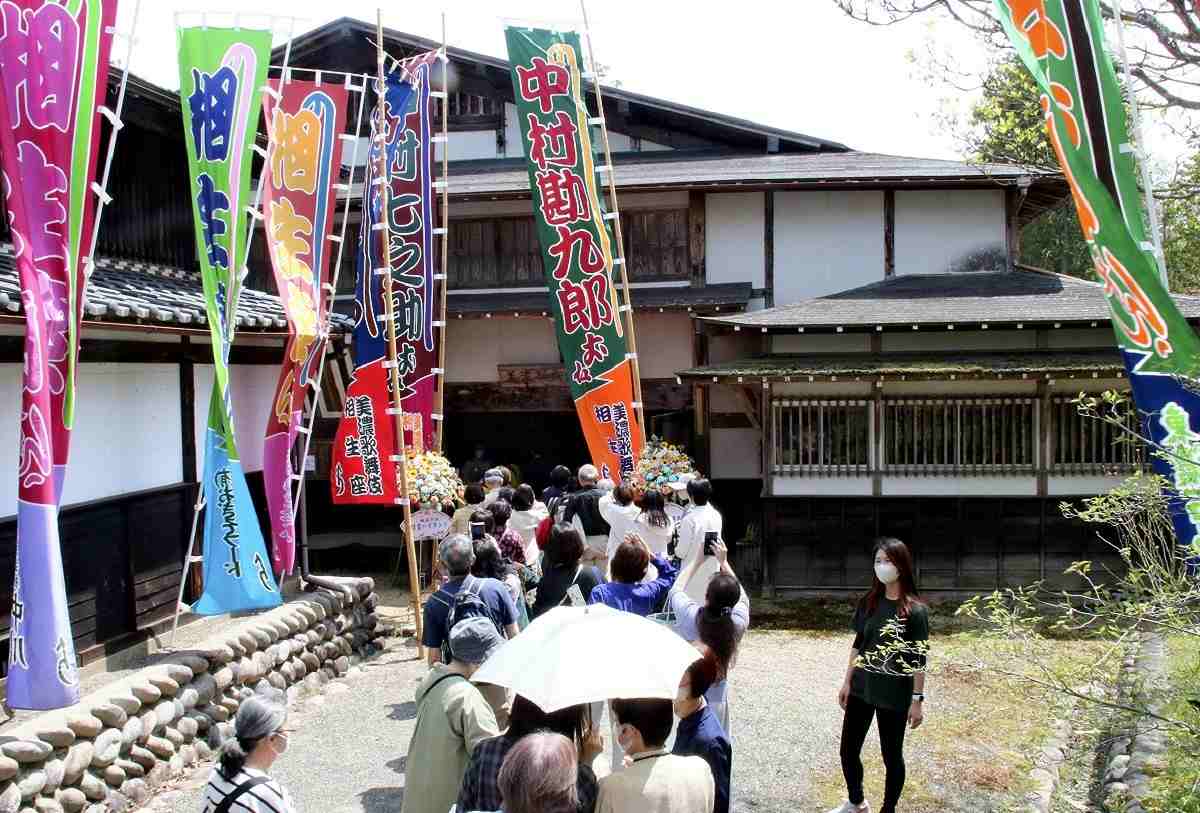
Banners fly in the Aioiza Theater.
“Kabuki is a collection of different arts, including music, costumes and wigs,” says theater director Sachie Oguri, 76. “I want to strengthen the foundation of kabuki and preserve its origins.”


